
Uwe Ommer (born 1943 in Bergisch Gladbach) is a German photographer.[ citation needed ]

Uwe Ommer (born 1943 in Bergisch Gladbach) is a German photographer.[ citation needed ]
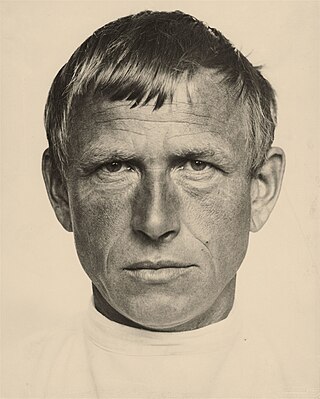
Wilhelm Heinrich Otto Dix was a German painter and printmaker, noted for his ruthless and harshly realistic depictions of German society during the Weimar Republic and the brutality of war. Along with George Grosz and Max Beckmann, he is widely considered one of the most important artists of the Neue Sachlichkeit.
Roy Stuart is an American photographer and film director who lives in Paris. His photographs blend glamour photography and contemporary art with an emphasis on female models and BDSM aesthetics. His photography books have been published by Taschen and has directed the movies Giulia and The Lost Door.
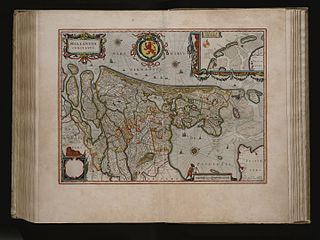
The Atlas Maior is the final version of Joan Blaeu's atlas, published in Amsterdam between 1662 and 1672, in Latin, French, Dutch, German and Spanish, containing 594 maps and around 3,000 pages of text. It was the largest and most expensive book published in the seventeenth century. Earlier, much smaller versions, titled Theatrum Orbis Terrarum, sive, Atlas Novus, were published from 1634 onwards. Like Abraham Ortelius's Theatrum Orbis Terrarum (1570), the Atlas Maior is widely considered a masterpiece of the Golden Age of Dutch/Netherlandish cartography.

Carl Grossberg, originally Georg Carl Wilhelm Grandmontagne was a German painter associated with the New Objectivity movement; best known for his urban and industrial scenes.

Salomé is a German artist. His paintings are in renowned museums and collections all over the world. Salomé became known as one of the members of the art group Junge Wilde or Neue Wilde. He also is recognized as a sculptor and Punk singer.

The Stages of Life is an allegorical oil painting of 1835 by the German Romantic landscape painter Caspar David Friedrich. Completed just five years before his death, this picture, like many of his works, forms a meditation both on his own mortality and on the transience of life.
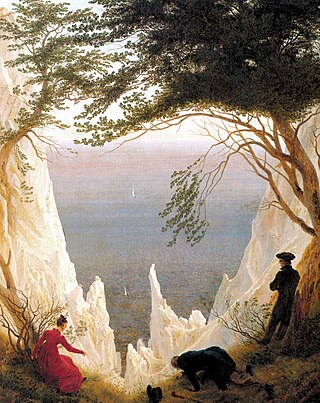
Chalk Cliffs on Rügen is an oil painting of circa 1818 by German Romantic artist Caspar David Friedrich.

The Abbey in the Oakwood is an oil painting by Caspar David Friedrich. It was painted between 1809 and 1810 in Dresden and was first shown together with the painting The Monk by the Sea in the Prussian Academy of Arts exhibition of 1810. On Friedrich's request The Abbey in the Oakwood was hung beneath The Monk by the Sea. This painting is one of over two dozen of Friedrich's works that include cemeteries or graves.
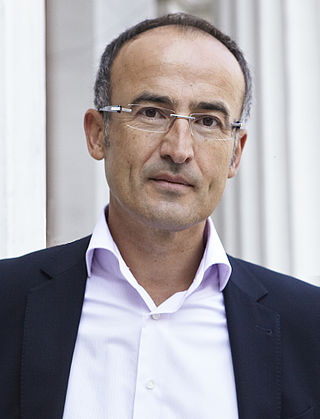
Tobias G. Natter is an Austrian art historian and internationally renowned art expert with a particular expertise in "Vienna 1900".
Egbert Baqué is a German gallerist, author and translator.

Ten Dollar Bill is a 1956 proto-pop art lithographic drawing by Roy Lichtenstein. Considered to be a combination of Americana art and cubism, the work is referred to as the beginning of Lichtenstein's work on pop art. Twenty-five editions of the lithograph were made by Lichtenstein, which were exhibited at several galleries. The piece is based on the design for the ten-dollar bill and has influenced several of Lichtenstein's later works. The picture has received generally favorable reception from critics, and is considered to be one of the best artistic portrayals of currency.
Frank Zöllner is a German art historian. He is among the leading authorities on the life and works of Leonardo da Vinci, about whom he has written numerous publications on. These include book-length studies on the Mona Lisa and one of the two modern catalogue raisonné of Leonardo's works, the other being by Pietro C. Marani.
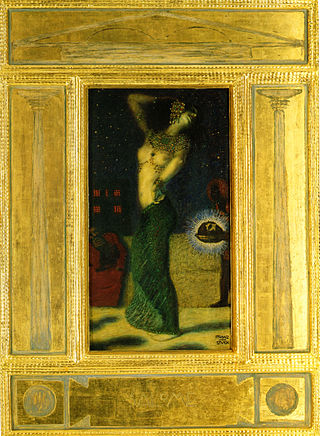
Salome is the title of two oil on wood paintings by the German artist Franz Stuck, both created in 1906. They depict Salome, daughter of Herod II and Herodias, an historical and biblical figure, dancing with joy as the head of John the Baptist is brought to her by a servant. Stuck was inspired, among other things, by the contemporary play by Oscar Wilde, the focus of which is Salome as a femme fatale.
Emmy Worringer (1878–1961) was a German artist and cofounder of the Gereonsklub, an avant-garde artists' association in Cologne in the years immediately preceding World War I.
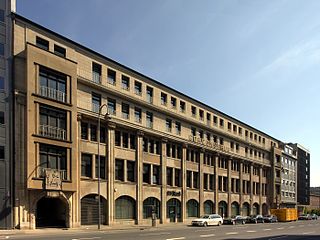
The Gereonsklub was an avant-garde artists' association in Cologne in the years immediately prior to World War I.

Wrapped Reichstag, Project for Berlin is a 1995 environmental artwork by artists Christo and Jeanne-Claude included as the wrapped up Berlin Reichstag building in fabric.
Wilhelm Heise was a German painter associated with the New Objectivity.

Two Women on the Hillside is an oil-on-canvas painting created in 1906 by German painter Franz Marc. It is part of the Bavarian State Painting Collections and is on a permanent loan at the Franz Marc Museum in Kochel am See.

Lady in Green Jacket is an oil-on-canvas painting by German artist August Macke, executed in 1913. It is held in the Museum Ludwig in Cologne.